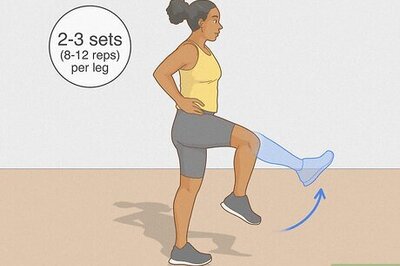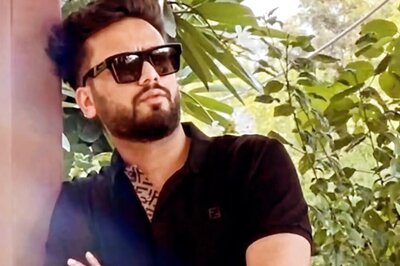
views
An elderly couple living in Saraswati Housing Society in Satellite area of Ahmedabad city ended their lives on Thursday by hanging themselves. The husband, Yogendra Vyas, was a famous linguist and author, and worked as a professor in Gujarat University. He had been battling kidney disease for the past few years, while his wife, Anjana Vyas, was fighting cancer. In the suicide note, they wrote that they were fed up with their ailments. Despite a lot of medicine and yoga their physical condition did not improve, and that is why they were choosing the extreme step, the note said.
The deaths have once again sparked a debate on euthanasia in the country. The Supreme Court in a landmark judgment in 2018 recognised “living will” made by terminally-ill patients for passive euthanasia. A five-judge constitution bench headed by the-then Chief Justice of India (CJI) Dipak Misra said passive euthanasia and advance living will are “permissible”.
The bench, also comprising justices AK Sikri, AM Khanwilkar, DY Chandrachud and Ashok Bhushan, laid down guidelines as to who would execute the will and how the nod for passive euthanasia would be granted by a medical board.
The SC said that advance directives for terminally ill patients could be issued and executed by the next friend and relatives of such a person after which a medical board would consider it. The court said that directions and guidelines laid down by it and its directive shall remain in force till legislation is brought on the issue.
The SC had in 2011 recognised passive euthanasia in the Aruna Shanbaug case by which it had permitted withdrawal of life-sustaining treatment from patients not in a position to make an informed decision.
Active and passive euthanasia
Active euthanasia entails the use of lethal substances or forces to kill a person such as with lethal injection given to a person with terminal cancer who is in terrible agony. Passive euthanasia entails withholding of medical treatment for continuance of life, such as withholding of antibiotics where without giving it a patient is likely to die, or removing the heart-lung machine, from a patient in a coma.
The general legal position all over the world seems to be that while active euthanasia is illegal unless there is legislation permitting it, passive euthanasia is legal even without legislation, provided certain conditions and safeguards are maintained.
Voluntary and non-voluntary euthanasia
A further categorisation of euthanasia is between voluntary euthanasia and non-voluntary euthanasia. Voluntary euthanasia is where the consent is taken from the patient, whereas non-voluntary euthanasia is where the consent is unavailable, for instance, when the patient is in a coma, or is otherwise unable to give consent.
While there is no legal difficulty in the case of the former, the latter poses several problems.
Laws on euthanasia in countries around the world
1) United States: Active euthanasia is not allowed in the US. However, in some states permission is granted on the advice of a doctor.
2) Switzerland: Euthanasia is not allowed. Suicide can be committed by self-injection of poison.
3) The Netherlands: Permission is granted for active euthanasia at the discretion of the patient. There is no penalty for this.
4) Belgium: Euthanasia has been allowed here since 2002.
5) Spain: In March 2021, euthanasia was allowed in Spain under certain conditions. If an adult suffers from an incurable disease and the disease is unbearable, euthanasia may be allowed.
6) Luxembourg: Both euthanasia and assisted suicide are legal here. However, the patient must be suffering from an incurable disease.
7) Canada: In March 2021, Canada made some amendments to this law. However, euthanasia and assisted death were already allowed here.
Read all the Latest News , Breaking News and Ukraine-Russia War Live Updates here.




















Comments
0 comment